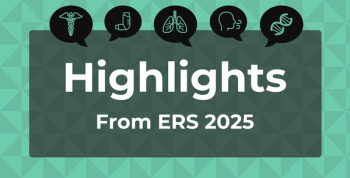
Elinzanetant Shows Strong 52-Week Safety for Vasomotor Symptoms: James Simon, MD
US safety data show that elinzanetant caused few adverse events and no new liver-related concerns in women, James Simon, MD, explains.
Nonhormonal treatment options for vasomotor symptoms continue to evolve with new evidence on safety and tolerability, and the most recent
Presented at
James Simon, MD, CCD, MSCP, clinical professor of obstetrics and gynecology at the George Washington University School of Medicine and medical director of IntimMedicine Specialists, explained to The American Journal of Managed Care® (AJMC®) how these results compare with both hormonal and other nonhormonal options.
This transcript has been lightly edited; captions were auto-generated.
Editor’s note: This interview was conducted prior to the FDA approval of elinzanetant.
Transcript
What do pooled US safety data reveal about long-term tolerability of elinzanetant across different study populations and durations of treatment?
It showed very clearly that elinzanetant was safe in this subset of women from the US for as long as a year. That’s the important take-home message. Very few side effects, and as you mentioned in the intro, this was a safety study.
How does the overall safety profile observed over 52 weeks compare with what clinicians typically see in short-term menopause symptom studies?
It shows that this type of therapy, elinzanetant, has very few adverse events—it’s a term of art, adverse events—compared to either the hormonal therapies that we use for vasomotor symptoms or the other existing nonhormonal therapies that are FDA approved for these symptoms as well.
What were some of these adverse effects?
Hormonal effects tend to be indirect effects of the hormones themselves. While a woman might take a hormonal therapy for her hot flashes and night sweats, she might have off-target effects that are seen as adverse effects or adverse events like breast tenderness, headache, nausea, bloating, bleeding, etc. And I could make a strong case that those aren’t really adverse effects, those are effects, but in the context of hot flashes, they are adverse effects.
As it relates to the other therapies that are nonhormonal, paroxetine mesylate and fezolinetant, the profile for elinzanetant actually had fewer adverse events overall and they were focused in what was already established as the adverse events seen in the pivotal clinical trials. No new or unusual unanticipated side effects, if you will, in this US population.
Were there any differences in treatment-emergent adverse events that could inform monitoring strategies or patient selection in clinical practice?
This remains to be determined as the final FDA-approved label for elinzanetant remains unknown at this moment in time, although I suspect we’ll know in a day or two. But the safety profile, as I will present the data, shows no signal for an adverse effect on hepatic function—on liver—which has been a subject of great controversy in this particular space because of the adverse effects seen in a very small group of patients given fezolinetant and the FDA’s warning labels and changes to the FDA-approved labeling for fezolinetant as a reaction to those liver effects. None of those liver effects were seen in this safety population overall or this subset of safety in American or US women.
Are there any plans to study safety beyond 52 weeks?
I think it’s a great idea. I think everybody would love to do it. I think it’s a question for the people at Bayer rather than for me. And some of those questions about longer-term safety may be done as separate studies in phase 4 once the drug is approved, but I don’t know the real answer to the question, so thanks, it’s a good question.
Newsletter
Stay ahead of policy, cost, and value—subscribe to AJMC for expert insights at the intersection of clinical care and health economics.













































